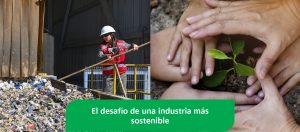When we talk about hazardous substances we refer to any chemical element, or compounds that can put at risk the ecosystem and the people’s health and safety. Considering this, many workers are directly exposed in their daily work, it is therefore necessary to understand how hazardous substances must be safely stored and managed to avoid health harm and environment pollution.
Before any manipulation is done, it is fundamental for these persons to have the required training in order to do so, and thereby necessary to recognize which ones they are or how to identify them. In this sense, Chilean Standard 382/2004 establishes a symbolism that classifies hazardous substances into nine classes, according to their characteristics: gases, explosives, corrosive substances, toxic and infectious substances, flammable liquids, flammable solids, hazardous substances and objects, miscellaneous, oxidizers and organic peroxides, and radioactive substances.
Having this distinction clear, it is then possible to follow the correct handling and storage criteria for each one of them, but do you know how to do it? The Supreme Decree No. 43, established by the Ministry of Health on the "Regulations for the storage of dangerous substances", highlights some requirements:
- There must be a security guard in charge of registering the entry and exit of people, machinery and products.
- The warehouse must have a perimeter closure made with walls resistant to actions of water, as well as a solid roof and floor, that is smooth, washable, waterproof and non-porous, and resistant to chemicals.
- Warehouses or storage areas cannot be located in residential zones, or near nurseries or kindergartens. These, on the contrary, must be located 15 meters from the warehouse, separated by a physical barrier.
- The warehouse must have a plan or diagram in view, where the location of the substances, fire extinguishers, emergency exits, etc. are detailed. In addition, the safety data sheets of the elements in store must be visible, according to the Official Chilean Standard.
- Storage areas must have spill containment and fire detection and protection systems, according to the amount and type of substances stored there.
- The storage containers should be made of materials that are compatible with the substances, allowing their conservation, that are difficult to break and do not spill or tip over easily.
- Substances that are incompatible with each other should be stored separately, with a minimum distance of 2.4 meters between them.
By following these guidelines, we will avoid the occurrence of accidents with hazardous substances to the limit, due to the fact that these mostly occur from human negligence by not using personal protective equipment, not reviewing the safety data sheet, lack of training, etc.
The recommendations are:
- Pay attention to all warning signs, such as “beware dangerous substance”. Check that the accessibility of the area is controlled and restricted by security and surveillance personnel.
- When handling hazardous substances, it is important to review the safety data sheet in advance, where material behavior is specified.
- Before starting to work, plan in detail and comply with all the security protocols established by the company.
- If you do not have training or authorization to work with specific substances, you must not do it.
- In the event of any discomfort inform to whom it may concern, according to the safety protocols of your workplace.
Working with hazardous substances can be safe if you pay attention and adhere to safety protocols.
Let's respect our life and environmental balance







